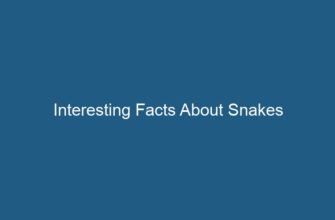Roosters, also known as male chickens, possess a unique feature that sets them apart from hens – a prominent skin flap under their neck. This skin, often referred to as a wattle, plays a significant role in the rooster’s life. In this article, we will explore the anatomy and functions of a rooster’s wattle, as well as delve into its various subtopics.
- Anatomy of a Rooster’s Wattle
- Function of the Wattle
- 1. Temperature Regulation
- 2. Sexual Attraction
- 3. Social Hierarchy
- How to humanely euthanized a chicken (no tools)
- how to CULL a sick chicken
- Development and Variations
- Frequently Asked Questions (FAQs)
- Q1: Are all roosters’ wattles red?
- Q2: Do roosters with larger wattles have better reproductive success?
- Q3: Can the wattle be an indicator of a rooster’s age?
- Q4: Can roosters feel pain if their wattles are injured?
- Q5: Can the wattle be used to determine a rooster’s breed?
- Q6: Do hens have wattles too?
- Conclusion
Anatomy of a Rooster’s Wattle
A rooster’s wattle is an elongated, fleshy structure that hangs down from the lower side of its head, specifically under the beak and just above the throat. It is typically red in color, although variations can occur depending on the breed. The wattle is composed of connective tissue, blood vessels, and skin, which give it its characteristic appearance.
Function of the Wattle
The wattle serves several important functions for the rooster, both in terms of survival and reproduction. Let’s explore these functions in detail:
1. Temperature Regulation
One of the primary roles of the wattle is thermoregulation. The extensive network of blood vessels within the wattle helps regulate the rooster’s body temperature. When the weather is hot, blood flow to the wattle increases, allowing heat to dissipate through the skin. Conversely, in cold conditions, blood flow is reduced to conserve heat.
2. Sexual Attraction
The wattle also plays a crucial role in attracting mates during the reproductive season. In many bird species, including roosters, bright and vibrant colors indicate good health and genetic fitness. The redness of the wattle signals reproductive readiness and can attract hens for mating.
3. Social Hierarchy
Roosters often establish a hierarchical structure within a flock, with one dominant rooster leading the group. The size and coloration of the wattle can play a role in determining the rooster’s position within the pecking order. A larger and more vibrant wattle may indicate a higher-ranking rooster.
How to humanely euthanized a chicken (no tools)
how to CULL a sick chicken
Development and Variations
The development of a rooster’s wattle starts at a young age, and its size and coloration can vary among individuals and breeds. Some roosters may have larger wattles than others, while certain breeds may exhibit unique color patterns or even wattles with multiple lobes. The genetic makeup of the rooster influences these variations.
It is worth noting that hens also possess a smaller version of the wattle, although it is usually less prominent and serves different functions compared to the rooster’s wattle.
Frequently Asked Questions (FAQs)
Q1: Are all roosters’ wattles red?
A1: While red is the most common color for roosters’ wattles, there can be variations. Some roosters may have wattles with a pinkish hue, while others may exhibit wattles that are closer to orange or purple in coloration.
Q2: Do roosters with larger wattles have better reproductive success?
A2: The size of a rooster’s wattle alone does not determine its reproductive success. Factors such as overall health, behavior, and the ability to compete for mates also play crucial roles in reproductive success.
Q3: Can the wattle be an indicator of a rooster’s age?
A3: While the wattle’s size may increase with age, it is not a reliable indicator of a rooster’s exact age. Other physical characteristics, such as spur development and plumage, are typically more accurate indicators of age.
Q4: Can roosters feel pain if their wattles are injured?
A4: The wattle contains numerous blood vessels and nerve endings, making it sensitive to pain. If a rooster’s wattle is injured, it can cause discomfort and should be treated promptly to prevent infection.
Q5: Can the wattle be used to determine a rooster’s breed?
A5: While the size and coloration of the wattle can vary among different rooster breeds, it is not a definitive characteristic for breed identification. Other physical traits, such as feather patterns and body shape, are typically more reliable indicators of breed.
Q6: Do hens have wattles too?
A6: Yes, hens also possess wattles, but they are usually smaller and less pronounced compared to those of roosters. The function of hens’ wattles is primarily related to thermoregulation and not as prominent in reproductive attraction.
Conclusion
The skin under a rooster’s neck, known as the wattle, is a fascinating feature that serves multiple purposes. From temperature regulation to reproductive attraction and social hierarchy, the wattle plays an essential role in a rooster’s life. Understanding the anatomy and functions of the wattle provides valuable insight into the fascinating world of these remarkable birds.










